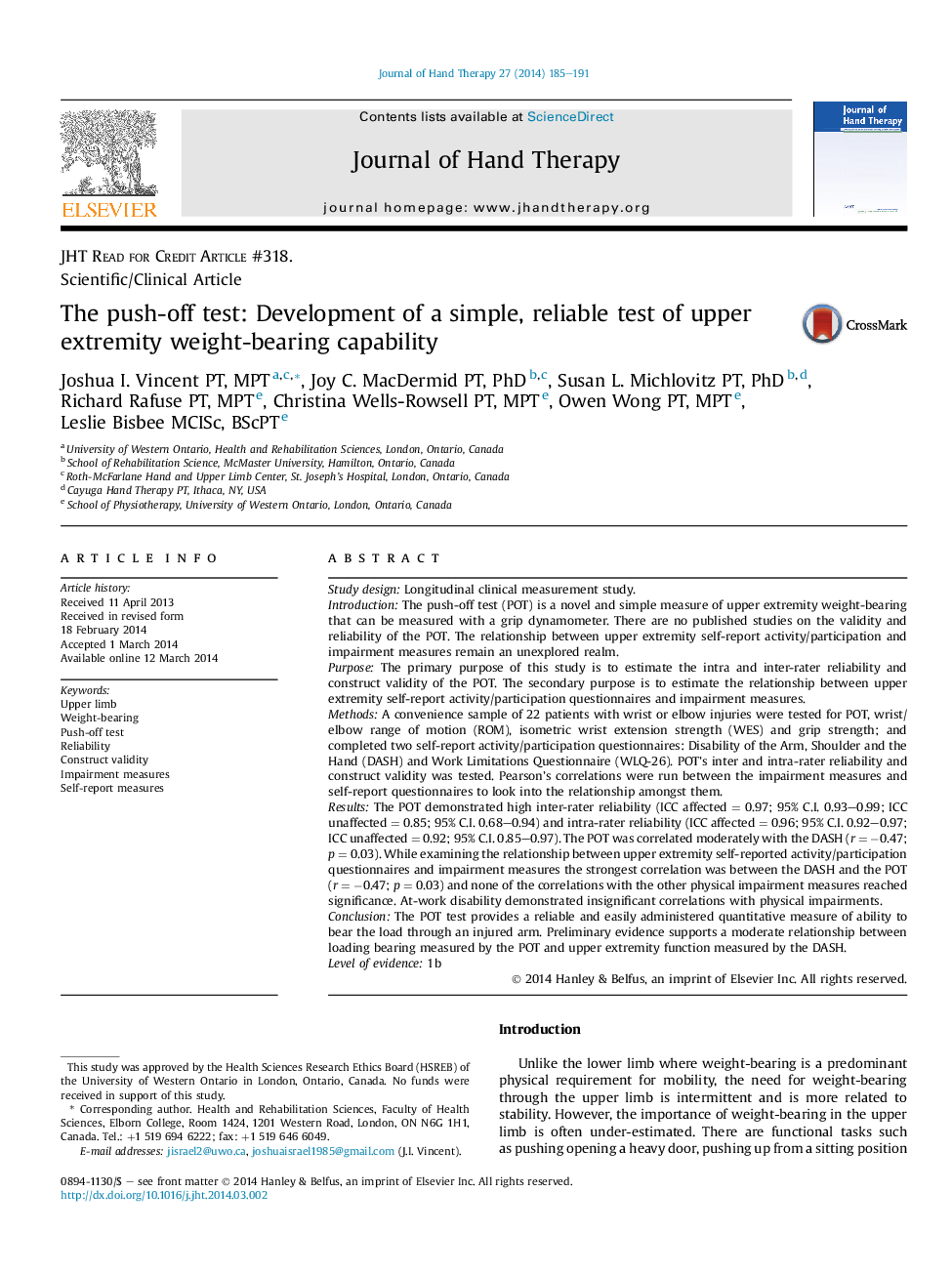| Article ID | Journal | Published Year | Pages | File Type |
|---|---|---|---|---|
| 2698206 | Journal of Hand Therapy | 2014 | 7 Pages |
Study designLongitudinal clinical measurement study.IntroductionThe push-off test (POT) is a novel and simple measure of upper extremity weight-bearing that can be measured with a grip dynamometer. There are no published studies on the validity and reliability of the POT. The relationship between upper extremity self-report activity/participation and impairment measures remain an unexplored realm.PurposeThe primary purpose of this study is to estimate the intra and inter-rater reliability and construct validity of the POT. The secondary purpose is to estimate the relationship between upper extremity self-report activity/participation questionnaires and impairment measures.MethodsA convenience sample of 22 patients with wrist or elbow injuries were tested for POT, wrist/elbow range of motion (ROM), isometric wrist extension strength (WES) and grip strength; and completed two self-report activity/participation questionnaires: Disability of the Arm, Shoulder and the Hand (DASH) and Work Limitations Questionnaire (WLQ-26). POT's inter and intra-rater reliability and construct validity was tested. Pearson's correlations were run between the impairment measures and self-report questionnaires to look into the relationship amongst them.ResultsThe POT demonstrated high inter-rater reliability (ICC affected = 0.97; 95% C.I. 0.93–0.99; ICC unaffected = 0.85; 95% C.I. 0.68–0.94) and intra-rater reliability (ICC affected = 0.96; 95% C.I. 0.92–0.97; ICC unaffected = 0.92; 95% C.I. 0.85–0.97). The POT was correlated moderately with the DASH (r = −0.47; p = 0.03). While examining the relationship between upper extremity self-reported activity/participation questionnaires and impairment measures the strongest correlation was between the DASH and the POT (r = −0.47; p = 0.03) and none of the correlations with the other physical impairment measures reached significance. At-work disability demonstrated insignificant correlations with physical impairments.ConclusionThe POT test provides a reliable and easily administered quantitative measure of ability to bear the load through an injured arm. Preliminary evidence supports a moderate relationship between loading bearing measured by the POT and upper extremity function measured by the DASH.Level of evidence1b
